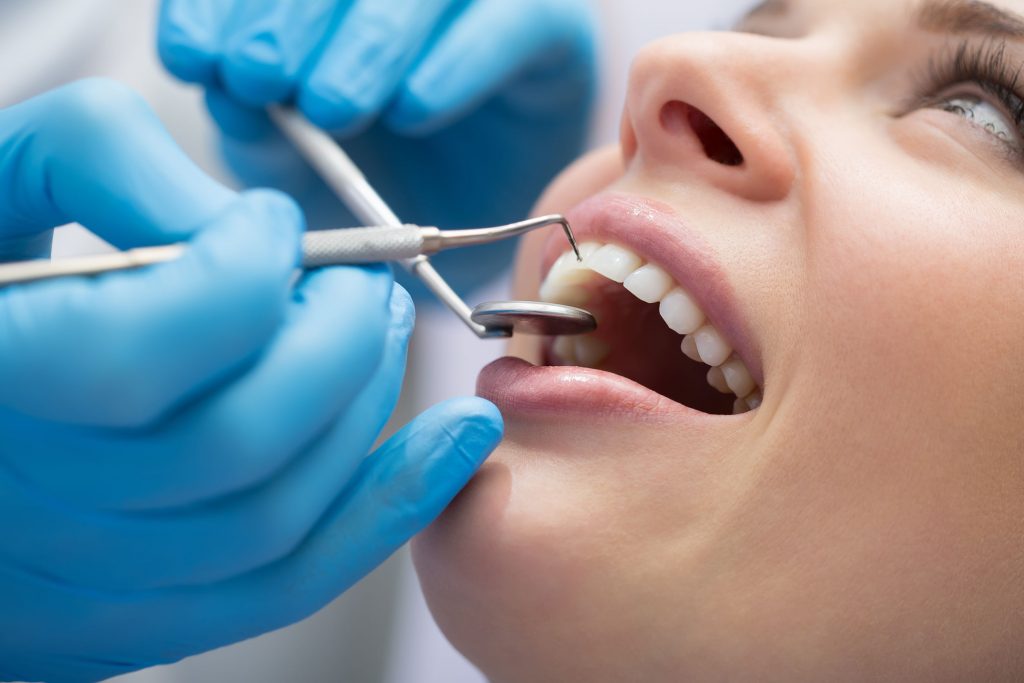The next challenge for you is figuring out what exactly your plan covers. There are so many different programs; it’s understandable to have questions. If you have what is called “Basic Dental Services” covered under your plan, it’s important to know what qualifies as “basic.”
What is Scaling? What is Root Planing?
Most of us are already familiar with basic dental services; we just don’t know the name of every procedure. You probably recall the dentist scraping your teeth with a sharp instrument, getting rid of plaque and tartar. This is a procedure called “scaling.” A unit of scaling equals fifteen minutes of time.
Root planing is similar, but the scraping occurs closer to the root of the teeth, along the gums. This treatment is usually reserved for those who have more severe cases of tartar buildup, and it is often performed by a periodontist.
Scaling typically has a reasonable and customary rate of 6-8 units per person, per year, but your dental insurance provider will be happy to confirm what your plan includes.
Exams – Which Ones Are Basic?
Every time you visit the dentist, unless it’s just for scaling by a hygienist, you will have an exam. Your very first exam will be considered a “complete exam”, meaning the dentist explores your whole mouth, identifying any issues. This type of exam is only eligible for reimbursement every few years.

If you are a returning patient, your next exam will be a “recall exam”. During this exam, your dentist will revisit any ongoing issues, will identify any cavities, and then recommend treatment. This exam is usually eligible every 6-9 months.
The Canadian Dental Association describes in detail what constitutes an emergency and what to do. Emergency exams are just that…exams for emergencies. These examinations are reimbursed typically every three years.
What is Polishing?
After you’ve had your scaling or root planing, your hygienist will want to clean up the rest of your teeth, and then use a polisher. This is a round type of brush called a prophy cup that they use to both brush and polish your teeth. It smoothes the surfaces of your teeth and is particularly useful when finishing the placement of fillings.
Like scaling, a unit of polishing is 15 minutes of time. You are eligible for one unit every 6-9 months, depending on your plan. If your dentist gives you a half unit, that still counts as a full unit. If you return to the dentist a month later for the other half unit, it will not be eligible for reimbursement.
X-Rays – Which Ones Are Covered?
There are several types of x-rays covered under basic dental services. If you are a new patient, your dentist will likely want a panoramic x-ray that shows all your teeth in one scan. These x-rays are also common when getting orthodontic services.
The most frequent x-rays are bitewings. They are the kind that you bite down on, and they show each side of your mouth, with emphasis on the molars. All x-rays are used to identify existing fillings, as well as cavities that need attention. Bitewings are usually eligible every 6-9 months, depending on your plan.
What About Fluoride?
After your hygienist has given you scaling treatment and polished your teeth, they may want to administer fluoride, which is usually in a liquid form that you hold in your mouth for a minute or two. Fluoride helps prevent tooth decay and can even reverse decay as it is occurring.

This is a treatment that is eligible every 6-9 months and is generally for children only.
Pit and Fissure Sealants
Sealants are fillings that are more for preventative measures than anything else. They are almost exclusively applied to children, particularly when they do not have enamel on their molars to protect them from cavities and decay.
Some plans do not cover these sealants, and if they do, they are covered for children only, so an estimate is always a good idea. They are considered a basic dental service and would be subject to your annual maximum.
Restorations – Metal vs. Porcelain
It’s not as common these days for people to get metal fillings. Technology has nearly perfected the process of making ceramic or porcelain (tooth coloured) fillings easy to place. They do still cost more than metal fillings, but many plans will reimburse for tooth coloured fillings on molars. As always, send an estimate if you’re not sure!
Endodontic Care
Most basic dental treatments are concerned with the enamel or outside parts of the teeth. Inside every tooth is pulp, which can become damaged. Endodontic care is treatment for the insides of your teeth, including the roots and pulp.
Some endodontic services include root canals, pulpectomies (the removal of the entire pulp), pulpotomies (the removal of part of the pulp) and various surgeries to treat cracked teeth and dental trauma.
As the prices for these services run high, it’s often mandatory to send an estimate beforehand, as these services are all subject to your annual maximum.
Even though they’re called basic services, there’s nothing very basic about them. The difference is that they are not on the same level as major dental services such as crowns, bridges, and dentures.
To find out more about coverage under your basic dental plan, call our office today and learn more about your entitlements.




